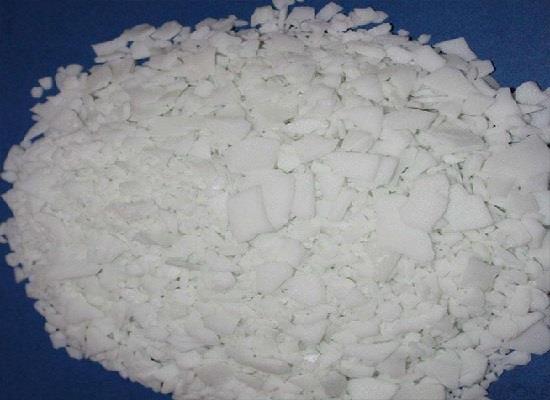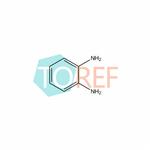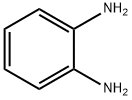o-Phenylenediamine: applications in fluorescent and colorimetric sensors
Jul 12,2023
General Description
o-Phenylenediamine, also known as Lansoprazole Impurity 22, can be readily oxidized by several types of oxidants to generate fluorescent 2,3-diaminophenazine (oxidized o-Phenylenediamine). o-Phenylenediamine exhibits unique properties, including susceptibility to oxidation and the formation of a fluorescent compound. It is used in the development of fluorescent sensors for detecting heavy metal ions and organic molecules. These sensors offer advantages such as high sensitivity, selectivity, and low detection limits, with potential applications in environmental monitoring and health-related research.

Figure 1. o-Phenylenediamine
Properties
o-Phenylenediamine is a precursor that is widely used in the synthesis of various heterocyclic compounds and polymers. It has garnered significant attention due to its unique properties. One notable characteristic of o-Phenylenediamine is its susceptibility to oxidation by different oxidants, such as Cu2+, Ag+, and H2O2. This oxidation process leads to the formation of a strongly fluorescent compound known as 2,3-diaminophenazine or oxidized o-Phenylenediamine. The fluorescence response exhibited by oxidized o-Phenylenediamine makes it a valuable component in the development of fluorescent sensors. These sensors utilize the specific fluorescence properties of oxidized o-Phenylenediamine to detect and quantify various analytes of environmental and biological significance, even in the presence of interfering matrices. They offer several advantages, including high sensitivity, excellent selectivity, shorter response times, and low detection limits. Fluorescence sensors incorporating oxidized o-Phenylenediamine can be utilized for intracellular detection, providing valuable insights into numerous interactions within biological systems. By leveraging the unique fluorescence characteristics of oxidized o-Phenylenediamine, these sensors enable researchers to study and understand various biological processes and phenomena. 1
Applications in fluorescent and colorimetric sensors
o-Phenylenediamine-based sensors for metal ions
In recent years, o-Phenylenediamine has been utilized in the development of fluorescent sensors for the detection of heavy metal ions. The monitoring of heavy metal ions is crucial for waste management, environmental protection, and water safety due to their harmful effects on human health. Various analytical methods have been employed for this purpose, including atomic absorption/emission spectroscopy, electrochemistry, colorimetric detection, and fluorescence analysis. o-Phenylenediamine-based fluorescent sensors offer a novel detection strategy for heavy metal ions. These sensors employ an autocatalytic reaction process, where nonfluorescent o-Phenylenediamine is oxidized to strongly fluorescent oxidized o-Phenylenediamine in the presence of heavy metal ions such as Cu2+ and Ag+. Simultaneously, the heavy metal ions are reduced to form corresponding nanoparticles, which catalyze the redox reaction and enhance fluorescence intensity. One example is the selective detection of Cu2+ and Ag+ using an autocatalytic fluorescence sensor. The concentrations of these metal ions can be quantitatively determined by measuring the increased fluorescence intensity of oxidized o-Phenylenediamine. Additionally, a paper-based test strip was developed for rapid determination of Cu2+ and Ag+ in real samples. Overall, o-Phenylenediamine-based fluorescent sensors provide sensitive and selective detection of heavy metal ions, offering potential applications in environmental monitoring and water quality assessment. 2
o-Phenylenediamine-based sensors for organic molecules
o-Phenylenediamine has found application in the detection of organic molecules for various physiological and pathological conditions. Organic molecules such as thiols, purines, ascorbic acid, and amino acids play significant roles in many biological processes. Developing highly selective and sensitive detection methods is crucial for understanding and managing human health. In the past decade, several approaches have been established for detecting organic molecules, including high-performance liquid chromatography (HPLC), UV-vis absorption spectroscopy, mass spectrometry (MS), and electrochemical analysis. Among these methods, fluorescent sensors have gained significant attention due to their operational simplicity, rapid response time, and high selectivity and sensitivity. o-Phenylenediamine -based sensors have especially attracted interest as they enable the "ON-OFF" or "OFF-ON" fluorescent strategies for the detection of organic molecules. These sensors utilize the unique properties of o-Phenylenediamine to switch the fluorescence signal on or off in the presence of the target molecules. By designing specific recognition elements and signal transduction mechanisms, o-Phenylenediamine-based sensors can achieve high selectivity and sensitivity in detecting various organic molecules of interest. Overall, the development of o-Phenylenediamine-based fluorescent sensors offers a promising approach for the selective and sensitive detection of organic molecules, contributing to advancements in understanding physiological functions and pathological conditions related to these compounds. 3
Reference
1. Ye Q, Ren S, Huang H, Duan G, Liu K, Liu JB. Fluorescent and Colorimetric Sensors Based on the Oxidation of o-Phenylenediamine. ACS Omega, 2020, 5(33):20698-20706.
2. Zhao XE, Lei CH, Gao Y, Gao H, Zhu SY, Yang X, You JM, Wang H. A ratiometric fluorescent nanosensor for the detection of silver ions using graphene quantum dots. Sens Actuators B, 2017, 253:239–246.
3. Li R, Lei C, Zhao XE, et al. A label-free fluorimetric detection of biothiols based on the oxidase-like activity of Ag+ ions. Spectrochim Acta A Mol Biomol Spectrosc, 2018, 188:20-25.
- Related articles
- Related Qustion
- Application and Pharmacology of o-Phenylenediamine Mar 30, 2022
1,2-phenylenediamine appears as colorless monoclinic crystals if pure; technical grade brownish-yellow crystals or a sandy brown solid. Used in manufacture of dyes, photography, organic synthesis.1,2-
Ethyl lactate is a versatile solvent with applications in chromatography, soil remediation and extraction of bioactive compounds. It is generally recognized as safe.....
Jul 12,2023APID-Mannitol is a non-hygroscopic sugar alcohol with various applications. It has low glycemic index, serves as a sweetener, and exhibits antioxidant effects.....
Jul 12,2023APIo-Phenylenediamine
95-54-5You may like
o-Phenylenediamine manufacturers
- o-Phenylenediamine
-

- $0.00 / 25Kg/Drum
- 2024-05-16
- CAS:95-54-5
- Min. Order: 1KG
- Purity: 99%
- Supply Ability: 200mt/year
- Lansoprazole Impurity 22
-

- $0.00 / 10mg
- 2024-04-11
- CAS:95-54-5
- Min. Order: 10mg
- Purity: above 98%
- Supply Ability: 10g/month
- o-Phenylenediamine
-

- $40.00/ kg
- 2024-03-31
- CAS:95-54-5
- Min. Order: 1kg
- Purity: 99%
- Supply Ability: 2000000




